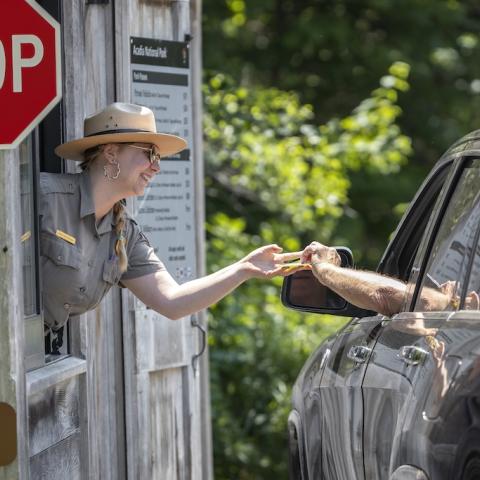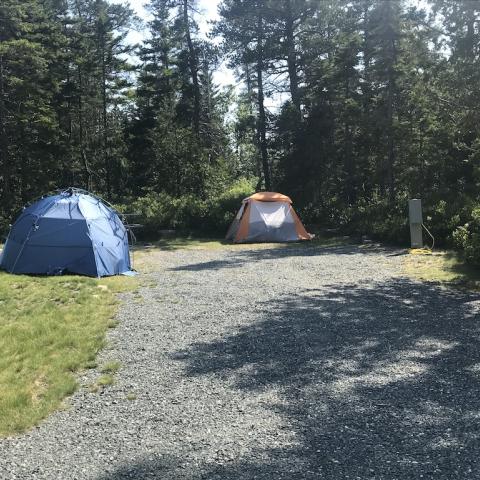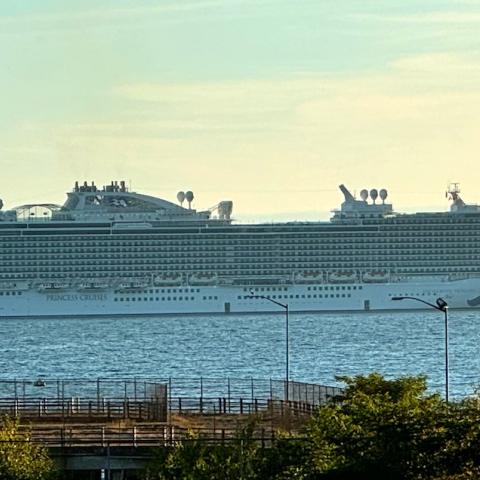
Should electric bikes and perhaps electric scooters be allowed on the carriage roads at Acadia National Park?/Rebecca Latson file
A story caught my eye the other day. It centered on electric bikes, and where they can roam in the National Park System. The story centered around Acadia National Park in Maine and raised the prospect that e-bikes might one day be allowed to travel the park's iconic carriage roads. Is that a good idea?
For now, the park is blocking the motorized bikes from heading down the carriage roads, which are restricting to muscle-powered cyclists, hikers, and equestrian travelers. But the AP story adds that "new rules are expected in the coming weeks."
“I’m hoping that they’re going to come to reality,” said one of the cyclists interviewed by the AP. “This will get more popular as time goes on.”
Well, there are a lot of popular things out there, but do they all deserve access in the parks? Remember Segways? What about those electric scooters that are all the rage in metropolitan areas? Will they be next to seek access to trails and areas normally off-limits to motorized vehicles?
In Canada, a pilot program is under way to test e-bikes on trails in Jasper National Park.
"There's a lot of places in the national park that are accessible by bike but maybe not to the entire general public due to limitations on fitness, etc.," Marc Vien, sales manager at Jasper Source for Sports, told CBC News. "But those e-bikes allow people to get to those places easily."
Tell us, travelers, how much access in the National Park System should electric bikes have?




 Support Essential Coverage of Essential Places
Support Essential Coverage of Essential Places







Comments
Electric bikes, within power and speed limits, cause much less trail damage and interference with user experience than horses and no more than mountain bikes. I am not familiar with these particular trails, but allowing anything other than hikers/walkers on a trai diminishes the appreciation of the natural environment for itself.
I took my ebike to Acadia last fall and toured some of the carriage roads at a leisurely pace to enjoy the scenery and get some exercise. With the exception of going up very steep hills, I was either keeping pace with slower traffic or going slower. My maximum speed was recorded as 12 mph. I was startled more than once by a Lycra-clad biker zooming past me. Operator behavior is key. Maybe try setting speed limits. I am obese and trying to lose weight to become more fit and healthy. I have a previous knee injury but it's not severe enough to have a medical disability note. Without my ebike, I would not have been able to experience these beautiful roads. Ebike speed is easily controlled, regardless of the class designation. Prohibition of ebikes would be like closing easy and handicapped accessible hiking trails. Apart from ebike commuters, I believe you will find ebikers to be an older, less fit demographic with some medical issues. We are not speed focused. Don't shut us out without at least a trial period.
I can only comment on Acadia, where I have biked extensively for nearly 30 years. I hope the current status is upheld; namely e-bikes are only allowed for use by those with a documented disability (and who would therefore be unable to use the facility otherwise). This current status is consistent with two premises: (1) that trail access is intended to provide users with an opportunity to EXERCISE in a natural setting, and (2) that everyone should have the opportunity to use the facility for that purpose. On a more practical note, the heavily used trails in Acadia are used by a great many children, not all of whom are experienced bikers. Biking defensively has allowed me to avoid many accidents with "enthusiastic" youngsters. The thought of youngsters on e-bikes is a frightening one.
Trails designed and built for slow pedestrian and bicycle traffic should not allow eBikes capable of 20 mph. Granted, there are three classes of eBike, but without close inspection, a ranger could not differentiate between a peddle assist and a throttle controlled bike, thus that limitation is unenforceable. You will have fast eBikes everywhere.
Limit eBikes to paved and gravel roadways designed for vehicular traffic, and keep hiking trails safe for hikers.
As a disabled veteran I cycle for rehab and exercise. I have ridden bikes on tours in Europe and recently purchased one. My ebike allows me to participate in rides on gravel roads and trails. I have found that most peopale who comment negatively have incorrect knowledge and most likely have never ridden one. Mountain ebike are limited in the assist to 20 mph and road versions to 28 mph. You must pedal and the bikes have no throttle. Many parks prohibit mountain biking after rains to prevent trail damage-that is reasonable. Many trails have etiquette guides for horse, hikers, and cyclists (bikers ride Harley's). Hard core mountain cyclists as shown on TV are generally not interested in riding on National Park trails and competing with hikers.
Class 1, pedal assist eBikes are very much like a non-electric bike and travel generall at about the same speed and have about the same impact on a natural surface trail. They make the simple joy of cycling accessible to those aging out or physically unable. In my experience, if naysayers would take a ride on one of these, they would have a vastly different opinion and would not object to class 1, low speed electric bikes.
I use an e-bike because of a heart condition. An ebike allows me to explore and still have the ability to get to home base . I think only pedelec (no throttle) should be allowed, however.